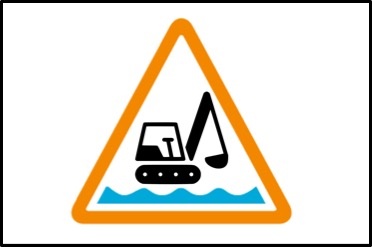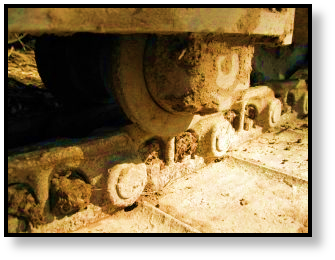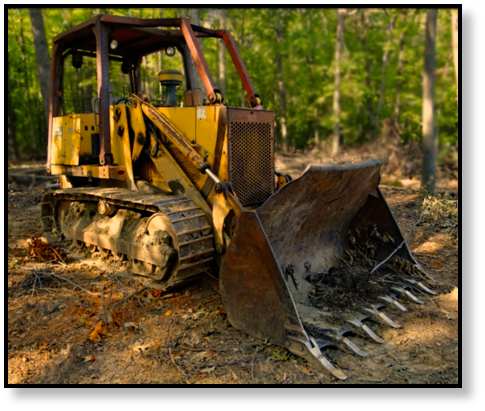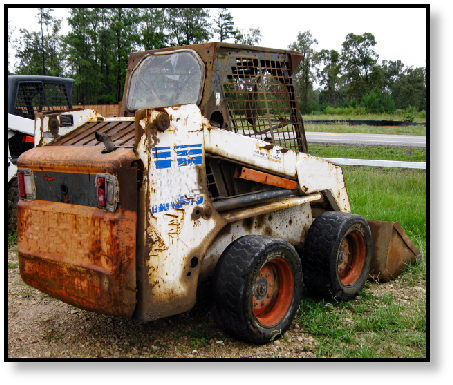
With all the flooding that took place in the Houston area this year (as well as many other places around the world), flood damage is at the forefront of many people's minds. With that in mind, here are some general guidelines to help with assessing your equipment after it has been subjected to flood waters.
NOTE: These are general guidelines only, and do not replace any instructions that may have been provided by the manufacturer or your insurance company, nor do they comprise a complete list of all steps that should be followed.
First Things First
First, do not start any engines. You may want to start and run a machine just long enough so that you can get to a machine wash bay -- do not do this. It can cause immediate damage to your equipment. Start by disconnecting the battery in case of an electrical short. Next, you will want detailed documentation for insurance reporting. You should include both pictures and videos wherever possible, and be sure to make note of water level marks on machines as well as nearby buildings. Mark the water level on each machine, and don't forget to jot down if it was setting at an angle.
 Cleaning and Drying Things Out
Cleaning and Drying Things Out
Once you've finished documenting the damage, start removing external guards and panels so you can access areas where water or debris may be trapped. Next, remove interior components, including items such as interior panels, cab mats, insulation, and seats. These items will likely need to be rinsed off and dried separately (if not replaced altogether).
Dealing with Electronics
Electronics need to be removed, dried out, and evaluated separately. This includes the following:
- Machine controls
- Control boxes
- Control systems
- Batteries
- Power cables
- Switches
- Sensors
- Motors, brakes, and drive controllers
- Ignition start module
- Fuses and fuse panels
Depending on the type of components involved and the extent of the damage, some of the electronics may need to be replaced.
Clean the Machine
Use a pressure washer to clean the entire machine where it is (remember: trying to start and move it can cause immediate and serious damage). The goal of washing the machine down is to remove debris left behind by the flood waters. The next course of action is to grease the machine. The purpose of this step is to help purge water, sand, silt, and other flood water contamination from the bearing, pin, and bushing locations. It is also a good idea to disassemble, clean, and then inspect boom sections, pinned joints, and bearing surfaces that were submerged during the flood. Wear pads will need to be replaced, as well as chains, cables, and, of course, damaged components. Finally, lubricate and reassemble.

Drain out the Fluids
Next, drain out all the fluids from components and housings, focusing primarily on the hydraulic system. It is a good idea to take note of the condition of these fluids as they are being drained. Replace all filters. This preps the hydraulic system for flushing.

Dealing with the Engine
The engine needs special attention. All the filters need to be changed and all screens need to be cleaned. The exhaust system must be drained of water. Depending on how high the water got and what type of equipment is involved, you may need to remove and clean the following:
- Air intake piping
- Turbo charger
- Intercooler
- Injectors
- Alternator
- Starter motor
Keep in mind that most diesel engines have not been designed to prevent water from entering the crankcase when flooded. The cylinders may need to have water removed and then have the cylinder liners oiled. Also, the rocker covers may need to be removed and the breathers cleaned. The rocker gear will also likely need to be cleaned.
Flushing the Systems
Once all of that is done, refill all the components that were drained earlier with clean oil. Now, turn the engine over by hand. You want to make sure there is no fluid in the engine cylinders. Then drain the engine oil. You can use diesel fuel to flush and purge any moisture if needed. Refill the engine oil. Test and install new batteries (it is likely that the old batteries have been contaminated with water).
Next, start the engine and bring it up to operating temperature. Evaluate machine performance, operating one function at a time. Once the machine has been run out and purged, drain all the fluids again, change the filters again, and then refill the fluids. This is to make sure that contamination has been flushed out.
Conclusion
This gives you an idea of what you need to do if your equipment is damaged by floodwaters. It is always a good practice to contact the manufacturer for their advice on what steps to take to see to it that your machine is properly evaluated and safely restored to working condition. Your insurance company should also be able to provide good advice on what you should do.
Texas Final Drive is your partner in providing new or remanufactured final drive hydraulic motors from a single mini-excavator to a fleet of heavy equipment. Call today so we can find the right final drive or hydraulic component for you, or check out our online store to find your O.E.M. manufacturer brand motor now.

